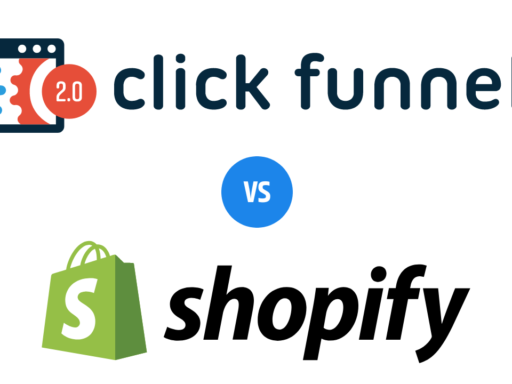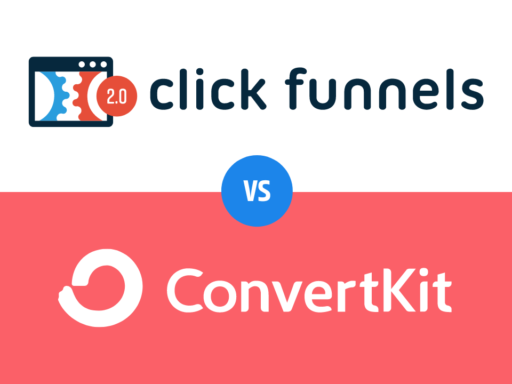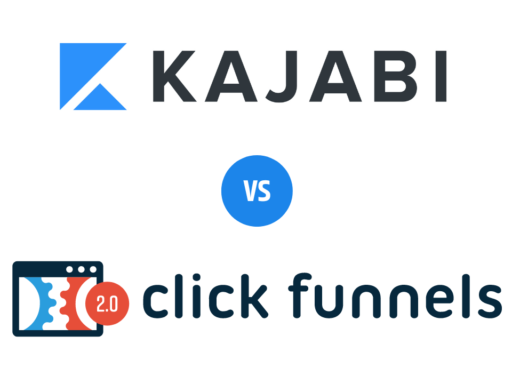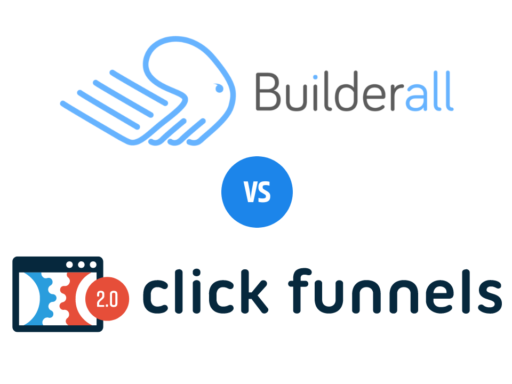
Table of Contents
ClickFunnels vs Leadpages is a debate many digital marketers and business owners face when choosing the best platform for their online marketing needs. Both tools enhance your digital presence and drive conversions, but each has its strengths and weaknesses. In this comparison, we evaluate ClickFunnels and Leadpages across several key criteria: Landing Page Templates, Customization Options, A/B Testing, Lead Generation Tools, Sales Funnel Features, Email Marketing, Analytics and Reporting, Integrations, and Pricing. By examining these aspects, you’ll gain a clear understanding of which platform best supports your business goals and marketing strategies. Whether you’re creating stunning landing pages, optimizing sales funnels, or leveraging lead generation tools, this guide will help you make an informed decision in the battle of ClickFunnels vs Leadpages.
Landing Page Templates
ClickFunnels
ClickFunnels offers a variety of high-quality, conversion-focused landing page templates designed to guide visitors seamlessly through the sales process. These templates are specifically crafted to optimize conversion rates, making it easy for users to create effective sales funnels quickly. However, the selection of templates is somewhat limited compared to Leadpages, which might be a drawback for users seeking more diverse design styles. Additionally, while these templates are great for driving conversions, they often require a higher-tier plan to access the full range of options.
Leadpages
Leadpages boasts an extensive library of professionally designed templates that cater to a wide range of industries and use cases. These templates are visually appealing and provide ample design variety, ensuring that users can find a template that fits their specific needs. The platform frequently updates its template library, adding new designs to keep up with current trends. While this vast selection is beneficial, some templates may require more customization to fit specific requirements, which can be time-consuming.
Customization Options
ClickFunnels
ClickFunnels features an intuitive drag-and-drop editor that allows users to easily customize their landing pages and sales funnels. The editor is designed for simplicity, making it accessible even for users without technical skills. However, advanced customization options are somewhat limited, which can be restrictive for users who need to implement complex design elements or specific functionalities. The focus on ease of use means that while customization is straightforward, it might not satisfy the needs of more experienced designers looking for in-depth control.
Leadpages
Leadpages offers a highly flexible drag-and-drop editor that provides extensive customization options, allowing users to tweak almost every aspect of their landing pages. Users can add custom HTML, CSS, and JavaScript to their pages, providing greater flexibility for advanced customizations. This makes Leadpages an excellent choice for users who need more control over their design elements. However, the extensive customization options can be overwhelming for beginners and require a learning curve to master fully. Advanced customization can sometimes complicate the design process, making it less straightforward than ClickFunnels’ approach.
A/B Testing
ClickFunnels
ClickFunnels includes built-in A/B testing features that are easy to set up and use, enabling users to test different versions of their funnels effectively. This feature allows users to experiment with various elements within their sales funnels to determine what works best for their audience. The platform provides comprehensive analytics and reporting on A/B test results, helping users make data-driven decisions. However, A/B testing features are only available in higher-tier plans, which might be a limitation for users on a budget.
Leadpages
Leadpages offers robust A/B testing tools across all its plans, making it accessible for users at any subscription level. Setting up A/B tests in Leadpages is straightforward, allowing users to quickly compare different landing page variations and optimize their pages for better performance. The platform provides detailed insights and analytics on A/B test results, helping users understand which elements drive conversions. While effective, the A/B testing interface can be less intuitive compared to ClickFunnels, requiring some familiarity to navigate efficiently. Additionally, A/B testing in Leadpages is limited to individual landing pages rather than entire sales funnels, which may restrict broader optimization strategies.
Lead Generation Tools
ClickFunnels
ClickFunnels excels in lead generation by providing a comprehensive suite of tools designed to capture and nurture leads throughout the sales funnel. It offers various lead capture forms, pop-ups, and landing pages that integrate seamlessly with its funnel-building process. Additionally, ClickFunnels includes features like one-click upsells, downsells, and follow-up funnels to maximize lead engagement and conversion rates. However, the focus on funnel-based lead generation might limit flexibility for users looking for more diverse lead generation strategies outside of sales funnels.
Leadpages
Leadpages is known for its robust lead generation capabilities, offering a variety of tools such as pop-ups, alert bars, and opt-in forms that can be easily integrated into any webpage. The platform also provides drag-and-drop landing page builders and numerous templates optimized for lead capture. One standout feature is Leadpages’ Leadboxes, which are customizable pop-up forms triggered by user actions. While Leadpages provides versatile lead generation tools, integrating these tools with a comprehensive sales funnel process might require additional third-party integrations.
Sales Funnel Features
ClickFunnels
ClickFunnels is renowned for its robust sales funnel features, offering users a seamless experience in building, managing, and optimizing sales funnels. The platform provides a wide array of pre-built funnel templates tailored for different business goals, such as product launches, webinars, and membership sites. With ClickFunnels, users can easily create multi-step sales funnels that include upsell, downsell, and cross-sell functionalities, all designed to enhance the customer’s journey and maximize conversions. The detailed analytics and A/B testing tools further enable users to refine their funnels for optimal performance. However, these advanced funnel features are often locked behind higher-tier plans, which can be a barrier for some users.
Leadpages
Leadpages provides basic funnel-building capabilities, allowing users to create simple sales funnels using its landing page and lead generation tools. While not as specialized or comprehensive as ClickFunnels, Leadpages integrates well with other marketing tools to create a cohesive funnel experience. Users can design landing pages, set up opt-in forms, and use Leadboxes to capture leads, which can then be nurtured through email marketing campaigns. However, the lack of advanced funnel features and the need for additional integrations may limit its effectiveness for users looking to build complex sales funnels.
Email Marketing
ClickFunnels
ClickFunnels includes integrated email marketing and automation through its Actionetics tool, available in higher-tier plans. This feature allows users to manage their email campaigns directly within the platform, creating targeted email sequences based on user behavior within the sales funnel. Actionetics enables sophisticated email marketing strategies, such as segmentation, tagging, and automated follow-ups, helping users nurture leads and convert them into customers. However, the advanced email marketing features are only accessible with the more expensive Etison Suite plan, making it less affordable for smaller businesses.
Leadpages
Leadpages does not have a built-in email marketing tool but integrates seamlessly with major email marketing services such as Mailchimp, AWeber, and ActiveCampaign. This allows users to easily connect their landing pages and opt-in forms to their preferred email marketing platform, enabling effective lead nurturing and email campaign management. While the need for third-party integrations adds an extra step, it provides users with the flexibility to choose the email marketing service that best fits their needs. This approach can be advantageous for users who prefer specialized email marketing tools over an all-in-one solution.
Analytics and Reporting
ClickFunnels
ClickFunnels offers comprehensive analytics and reporting tools to track the performance of your sales funnels and landing pages. Users can monitor key metrics such as conversion rates, visitor behavior, and revenue generated from each funnel step. The platform provides detailed reports that help identify bottlenecks and areas for improvement, allowing users to make data-driven decisions. Advanced analytics features like A/B testing results and user segmentation are available, giving users deeper insights into their marketing efforts. However, these advanced reporting tools are often only accessible in higher-tier plans.
Leadpages
Leadpages provides robust analytics and reporting capabilities focused on the performance of landing pages and lead generation forms. Users can track metrics such as page views, conversions, and bounce rates directly from the Leadpages dashboard. The platform offers easy-to-understand reports that help users optimize their pages for better performance. Leadpages also integrates with Google Analytics, allowing for more in-depth tracking and analysis. While the analytics tools are effective, they may not be as comprehensive as those offered by ClickFunnels, particularly for users looking for advanced funnel analytics.
Integrations
ClickFunnels
ClickFunnels supports a wide range of integrations with third-party tools, enhancing its functionality and flexibility. Users can connect ClickFunnels with popular email marketing services, payment gateways, CRM systems, and webinar platforms. The platform also offers Zapier integration, which allows users to automate workflows and connect with thousands of additional apps. This extensive integration capability ensures that users can build a cohesive marketing stack tailored to their specific needs. However, some integrations may require additional setup and can occasionally be less seamless.
Leadpages
Leadpages excels in its ability to integrate with numerous marketing tools and services, providing users with flexibility in building their marketing ecosystem. The platform connects easily with major email marketing services, CRM systems, payment gateways, and analytics tools. Leadpages also supports Zapier integration, enabling users to connect with a wide array of apps and automate various tasks. This extensive integration capability allows users to leverage the best tools for their marketing strategies. While effective, integrating multiple tools can sometimes require additional configuration and management.
Pricing
ClickFunnels
ClickFunnels offers three main pricing tiers: the Basic plan at $97 per month, the Platinum plan at $297 per month, and a higher-tier plan with custom pricing for enterprise-level features. The Basic plan includes essential funnel-building features, while the Platinum plan provides access to advanced tools like Actionetics for email marketing and Backpack for affiliate management. While ClickFunnels offers powerful features, its pricing is relatively high, which can be a barrier for smaller businesses or individuals on a tight budget. The cost increases significantly if users need access to advanced features locked behind higher-tier plans.
Leadpages
Leadpages offers three pricing plans: the Standard plan at $37 per month, the Pro plan at $79 per month, and the Advanced plan starting at $321 per month. The Standard plan includes essential features such as landing page creation and lead generation tools, while the Pro plan adds capabilities like online sales and payments, A/B testing, and email trigger links. The Advanced plan provides additional features and priority support. Leadpages is generally more affordable than ClickFunnels, making it accessible to a broader range of users, including small businesses and startups. However, users might need to invest in third-party integrations to achieve the full range of functionalities provided by ClickFunnels.
Pros and Cons (ClickFunnels vs Leadpages)
ClickFunnels
Pros:
- Comprehensive Sales Funnel Features: ClickFunnels excels in providing a complete suite of tools for building, managing, and optimizing sales funnels, including upsells, downsells, and follow-up funnels.
- Integrated Email Marketing: With Actionetics, ClickFunnels offers powerful email marketing and automation features, allowing users to manage their campaigns directly within the platform.
- High-Quality Templates: The platform offers a variety of professionally designed, conversion-focused templates that make it easy to create effective sales funnels quickly.
Cons:
- Higher Pricing: ClickFunnels’ advanced features come at a higher cost, which can be a barrier for smaller businesses or those with limited budgets.
- Learning Curve: Despite its powerful features, ClickFunnels can have a steep learning curve for new users, particularly those unfamiliar with sales funnel concepts.
- Limited Customization: While user-friendly, the customization options in ClickFunnels can be somewhat limited, especially for users seeking highly unique designs or advanced functionalities.
Leadpages
Pros:
- User-Friendly Interface: Leadpages is known for its intuitive drag-and-drop editor, making it easy for users of all skill levels to create and customize landing pages.
- Affordable Pricing: Leadpages offers a range of pricing plans that are generally more affordable, making it accessible to small businesses and startups.
- Extensive Template Library: The platform provides a vast library of professionally designed templates, catering to a wide variety of industries and purposes.
Cons:
- Basic Funnel Features: Leadpages lacks the advanced funnel-building capabilities of ClickFunnels, which can be limiting for users needing comprehensive sales funnel solutions.
- Integration Reliance: To achieve the same level of functionality as ClickFunnels, users often need to rely on multiple third-party integrations, which can add complexity and cost.
- Performance Optimization: While effective, some Leadpages templates and features may require additional tweaking and optimization to achieve the best performance and conversion rates.
Conclusion
In the ongoing debate of ClickFunnels vs Leadpages, it’s clear that both platforms bring powerful tools to the table, each catering to different aspects of digital marketing.
ClickFunnels shines with its comprehensive suite of features designed for creating and optimizing sales funnels. Its conversion-focused templates, robust customization options, and advanced capabilities like integrated email marketing and detailed analytics make it an excellent choice for businesses that prioritize funnel building and conversion optimization. However, these advanced features come at a higher cost, which might be a consideration for smaller businesses or those on a tighter budget.
Leadpages, on the other hand, stands out for its user-friendly design, extensive template library, and affordability. It offers versatile lead generation tools, flexible customization, and accessible A/B testing across all plans. Leadpages is ideal for businesses looking to create effective landing pages and generate leads without the need for complex funnel-building features. Its seamless integration with various marketing tools further enhances its appeal, making it a versatile option for many users.
Ultimately, the choice between ClickFunnels vs Leadpages depends on your specific marketing goals, budget, and the features you prioritize. If you’re focused on comprehensive funnel optimization and have the budget for it, ClickFunnels may be the better option. However, if you need a cost-effective, user-friendly solution for creating landing pages and generating leads, Leadpages is an excellent choice. By carefully considering the strengths and limitations of each platform, you can make an informed decision that best supports your business objectives.




